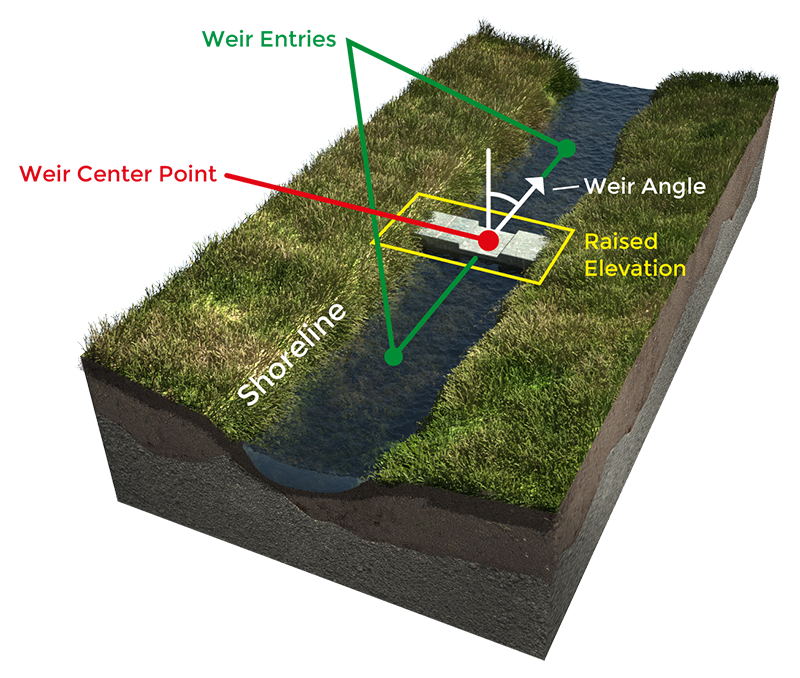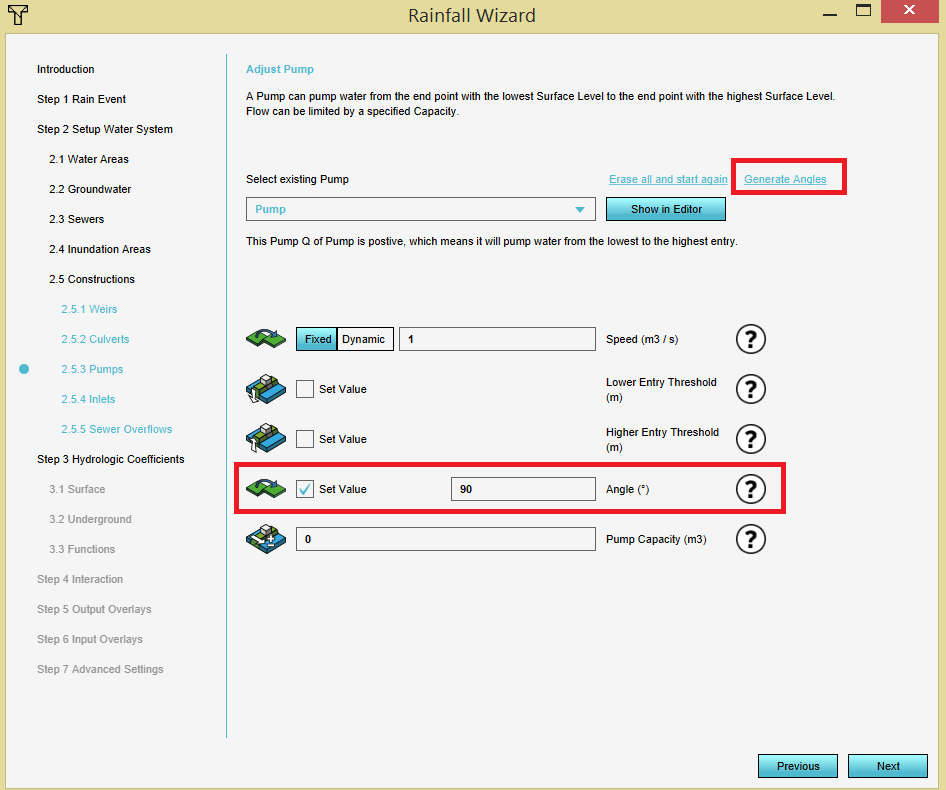Pump angle (Water Overlay): Difference between revisions
Jump to navigation
Jump to search
No edit summary |
No edit summary |
||
| Line 7: | Line 7: | ||
}} | }} | ||
==Notes== | ==Notes== | ||
[[File:Weir_angle_explain_(Water_Overlay).png|thumb|The image displays the principle for a weir. The same principle is applied for a pump|right|x300px]] | [[File:Weir_angle_explain_(Water_Overlay).png|thumb|The image displays the principle for a weir. The same principle is applied for a pump.|right|x300px]] | ||
* This angle is used to generate a line for the front and end points of the pump. Additionally, the elevation is also automatically adjusted for the region perpendicular to the pump angle. | * This angle is used to generate a line for the front and end points of the pump. Additionally, the elevation is also automatically adjusted for the region perpendicular to the pump angle. | ||
* If no angle is available as an attribute, the angle can be calculated by using the Generate Angles option in the Pumps step of the wizard. | * If no angle is available as an attribute, the angle can be calculated by using the Generate Angles option in the Pumps step of the wizard. | ||
[[File:Pump_angle.PNG|thumb|left|x300px]] | [[File:Pump_angle.PNG|thumb|left|x300px]] | ||
{{WaterOverlay hydraulic structure nav}} | {{WaterOverlay hydraulic structure nav}} | ||
Revision as of 09:10, 18 December 2019
Notes

- This angle is used to generate a line for the front and end points of the pump. Additionally, the elevation is also automatically adjusted for the region perpendicular to the pump angle.
- If no angle is available as an attribute, the angle can be calculated by using the Generate Angles option in the Pumps step of the wizard.





